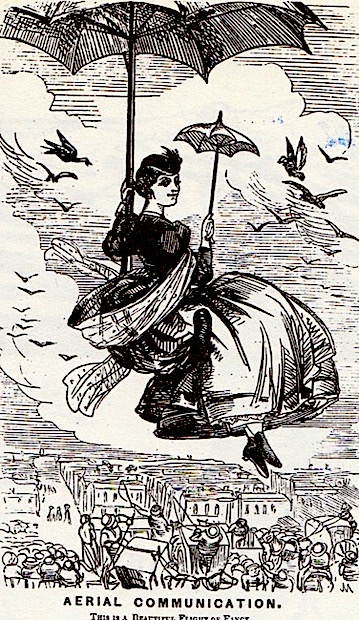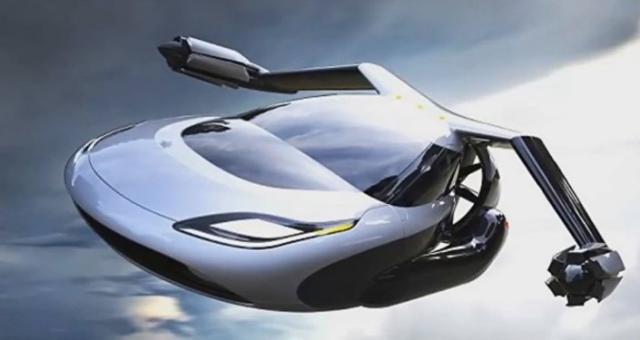Search
Recent comments
- dump trump...
8 hours 5 min ago - merde-a-lago...
14 hours 36 min ago - targets....
15 hours 11 min ago - WW2
15 hours 43 min ago - lawlessness....
16 hours 48 min ago - superman....
17 hours 15 min ago - a split....
17 hours 40 min ago - not semite....
1 day 11 hours ago - force for me....
1 day 11 hours ago - no legal justification....
1 day 18 hours ago
Democracy Links
Member's Off-site Blogs
flying high... for pleasure.

Uber Technologies Inc. and Airbus SE. have joined a public-private panel in Japan tasked with developing airborne vehicles in the country within the next decade.
On Friday, the Japanese Ministry of Economy, Trade and Industry announced that it would allocate $40.4 million to be used for the private-sector development of high-performance batteries, motors and other equipment for flying cars, Japan Times reported Saturday. The use of flying cars will help to solve the problem of traffic jams in big cities, according to industry reports.
Read more:
https://sputniknews.com/science/201808261067491259-flying-car-being-deve...
Concept car below:

Above: flying NASA concept car
Image at top from Punch, Sydney, 1865, cartoon imagining the future from a real Giffard flying-trip over Paris at 9 kilometres an hour...
Giffard was born in Paris in 1825. He invented the injector and the Giffard dirigible, an airship powered with a steam engine and weighing over 180 kg (400 lb). It was the world's first passenger-carrying airship (then known as a dirigible, from French).[1] Both practical and steerable, the hydrogen-filled airship was equipped with a 3 hp steam engine that drove a propeller. The engine was fitted with a downward-pointing funnel. The exhaust steam was mixed in with the combustion gases and it was hoped by these means to stop sparks rising up to the gas bag; he also installed a vertical rudder.
On 24 September 1852, Giffard made the first powered and controlled flight travelling 27 km from Paris to Élancourt.[2] The wind was too strong to allow him to make way against it, so he was unable to return to the start.[2] However, he was able to make turns and circles,[citation needed] proving that a powered airship could be steered and controlled.
Giffard was granted a patent for the injector on 8 May 1858. Unusually, he had thoroughly worked out the theory of this invention before making any experimental instrument, having explained the idea in 1850. Others had worked on using jets, particularly Eugène Bourdon who patented a very similar device in 1857.[3]
In 1863, he was appointed a Chevalier of the Légion d'honneur.[4]
Read more:
- By Gus Leonisky at 27 Aug 2018 - 10:54am
- Gus Leonisky's blog
- Login or register to post comments
sustainably flying...
humanless cities for flying objects...
Singapore was the first country to begin trialling driverless taxis back in 2016 and last year unveiled plans to introduce "robot buses and shuttles" to commuters starting in 2020, according to local newspaper The Straits Times.
The planned flying car trial aims to determine whether the electric-powered aircraft, which was created with inner-city flight in mind, will live up to its design brief when operating in an urban environment.
Though the prototype resembles a helicopter, its drone-like capabilities means it can be operated from the ground or by a pilot, carrying two passengers for about 30 kilometres.
Read more:
https://www.abc.net.au/news/2018-10-22/singapore-flying-taxi-trial-announced-second-half-2019
Read from top.
the best so far...
The Civil Aviation Safety Authority is investigating footage posted on social media of a man fishing from a chair that's being lifted by a homemade drone.
Key points:In the vision, taken at Upper Coliban Reservoir in central Victoria, the man, with beer at hand, is carried for several metres above the water, catches a fish and eventually returns to shore.
CASA spokesman Peter Gibson said there were serious safety risks involved with what appeared in the footage.
"This is a first for Australia, to have a large homemade drone being used to lift someone off the ground," he said.
"It's really not a sensible thing to do in any way, shape or form; there's lots of things that could have gone wrong, someone could have been seriously injured."
Tim French, a Sunbury electrician who helped design and build the drone, has declined to comment.
Not clear if rules breachedMr Gibson said severe breaches of aviation regulations could result in penalties of more than $10,000 in fines or CASA could pursue court action.
Read more:
https://www.abc.net.au/news/2019-08-29/footage-of-man-fishing-from-drone...
Read from top.
the future is yesterday's news...
It’s not every day that the future arrives, but here we are in 2020. The number itself is pregnant with possibilities, evoking as it does foresight, clarity, vision. It’s little wonder that this year has acted almost like an idée fixe on the political and cultural imagination — much like 1984, or 2000, or 2001 did in the twentieth century.
Back in 2008, newly elected prime minister Kevin Rudd convened a summit of Australia’s "best and brightest" to discuss what kind of nation they wanted Australia to be in 2020, what were the big challenges that confronted the nation and what were the big ideas or the great innovations that would be needed to meet those challenges. Going back and revisiting the summit’s final report is a bracing exercise. Because 2020, now that we’re here, doesn’t look very much like the future at all.
What happened?
Following the heady-optimism that was in the political air — which carried Kevin Rudd to power in 2007 and Barack Obama to the presidency in 2008 — why was there such a violent reversion, not just to the norm, but to its stunted, Lilliputian parody? Why was the open, expansive vision of the future to which Rudd and Obama appealed, and which they seemed to almost embody, so roundly repudiated? Is there a lesson here about the importance of adopting a sceptical posture, a profound reticence to claim to know, much less predict, our political future? Or are we just reading the wrong signs?
Read more:
https://www.abc.net.au/radionational/programs/theminefield/2020-—-why-...
Read from top.
Imagining the future is like walking on a high wire with several forks towards buildings that don't exist yet... Adaptation is required. Our politicians are mostly devious dinosaurs on the way to extinction but they breed delusions and hubris faster than their demise. The past is our memory, whether it is remembered correctly or not... So, what do we want?...